Economy
Oil markets stumble as sanctions, tariffs and oversupply collide
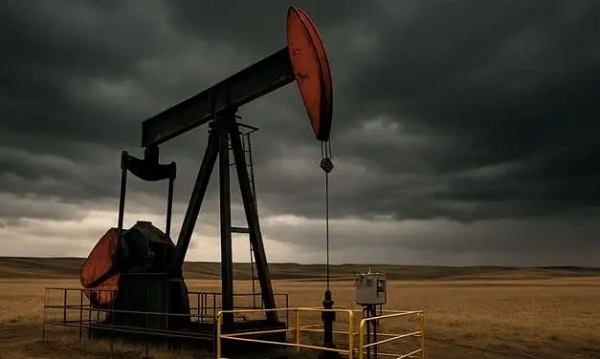
This article supplied by Troy Media.
EU sanctions, OPEC+ shifts and political risk are fuelling volatility in oil markets
Crude oil markets are being pulled in every direction—and no one seems to know where they’re headed next.
After weeks of internal debate, the European Union has now imposed its 18th package of sanctions against Russia since the start of the Ukraine war, tightening its grip on Russian oil exports. The latest measures reduce the price cap on Russian crude from US$60 to US$47.60 per barrel and target more than 100 additional “shadow fleet” tankers—vessels used to move oil covertly to bypass sanctions. EU leaders say the goal is to align the cap with prevailing global market prices and further restrict Russia’s energy revenues.
The price cap system, introduced by the G7 and EU in late 2022, allows Russian oil to be sold to non-Western countries—such as India and China—only if it is priced at or below the cap. Western companies are prohibited from providing key services like shipping, insurance or financing for any Russian oil sold above that limit. Since most of the world’s maritime insurance and oil shipping is handled by Western firms, the cap gives the West
leverage to constrain Russia’s oil revenue without cutting off supply completely.
By lowering the cap from US$60 to US$47.60, the EU is tightening that squeeze, making it harder for Russia to find legal routes to sell oil at higher prices.
But the measures go beyond pricing. A full transaction ban has been imposed on the Nord Stream 1 and 2 pipelines—infrastructure built to carry natural gas from Russia to Europe— halting any further development or use. The EU also expanded restrictions on traders, transporters and entities that enable Russian energy flows, including a major Indian refinery linked to Rosneft, Russia’s state-controlled oil company.
In theory, these steps should tighten global oil supply and put upward pressure on prices. In practice, the response has been muted. The United States hasn’t adopted the lower cap, and traders largely expect Russian crude to continue flowing through grey and black markets. Many believe the impact on global supply will be minimal, at least for now.
The EU also banned imports of refined petroleum products made from Russian crude that are processed in third countries—a common sanction workaround—but exempted close allies including Canada, the U.S., the U.K., Norway and Switzerland, which are already aligned with G7 restrictions.
For Canada, a resource-rich country with a globally integrated oil sector, these developments matter. Global oil prices influence gasoline and diesel costs, heating fuel and shipping rates. They also affect Alberta’s oil and gas industry—a major driver of national GDP and federal revenues. When energy markets wobble, the Canadian economy often feels the ripple effects.
Adding to market tension is the spectre of oversupply. OPEC+, the alliance of oil-producing countries led by Saudi Arabia and Russia, had planned to boost production by 548,000 barrels per day in August, with a similar increase in September. That announcement cooled market sentiment temporarily. However, Bloomberg reports suggest the cartel is already considering a pause in output hikes come October, reflecting concerns about a global demand slowdown and swelling inventories.
The International Energy Agency warns that crude stockpiles are growing at a rate of one million barrels per day, with a projected surplus by the final quarter of 2025. That surplus— equivalent to 1.5 per cent of global crude consumption—could push prices down if demand weakens further.
Meanwhile, geopolitics continue to add instability. Iraq’s government recently approved crude exports from its semiautonomous Kurdish region via the Iraq–Turkey pipeline, which could inject additional supply into the market.
In Washington, U.S. President Donald Trump has signalled his administration is considering tougher economic measures on Russia, including the possibility of secondary tariffs targeting energy exports. But most traders remain skeptical that such steps would disrupt global oil flows in the near term.
Even recent signs of strength in the U.S. economy—normally bullish for energy demand—haven’t lifted prices decisively. The ongoing tariff battles, lurching between escalation and retreat, have only added to the confusion. Oil markets have grown wary of trying to predict outcomes based on political posturing.
Without clear coordination among major players, volatility will remain the market’s default setting—and that spells trouble for oil-dependent economies like Canada’s.
Toronto-based Rashid Husain Syed is a highly regarded analyst specializing in energy and politics, particularly in the Middle East. In addition to his contributions to local and international newspapers, Rashid frequently lends his expertise as a speaker at global conferences. Organizations such as the Department of Energy in Washington and the International Energy Agency in Paris have sought his insights on global energy matters.
Troy Media empowers Canadian community news outlets by providing independent, insightful analysis and commentary. Our mission is to support local media in helping Canadians stay informed and engaged by delivering reliable content that strengthens community connections and deepens understanding across the country.
Economy
Oil prices fall under pressure as global supply surges
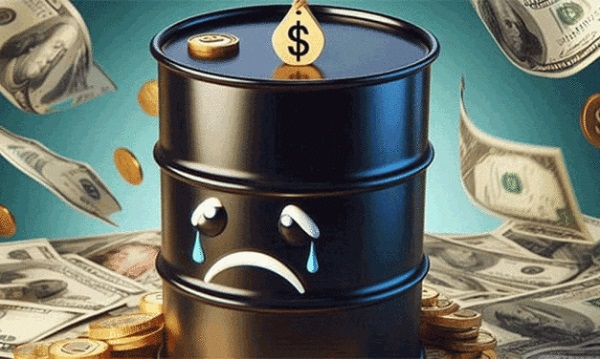
This article supplied by Troy Media.
OPEC output, weak demand and global politics are flooding the market. Experts warn an oil supply glut could hit by 2026
Global oil markets are bracing for a long-term downturn, driven by rising supply, softening demand and mounting economic headwinds.
Brent crude closed Friday at US$66.68 per barrel, down 76 cents or 1.1 per cent. West Texas Intermediate dropped 89 cents to US$62.68, a 1.4
per cent decline. While markets initially hoped an interest rate cut by the U.S. Federal Reserve might boost consumption, oversupply concerns have taken the wheel.
The International Energy Agency now projects a market surplus of 3.3 million barrels per day (bpd) by 2026 if current policies remain in place. Global supply is expected to rise by 2.7 million bpd in 2025 and another 2.1 million in 2026, while demand will grow by just 700,000 bpd annually.
The U.S. Energy Information Administration echoes the concern. Its latest ShortTerm Energy Outlook forecasts global petroleum and other liquid fuels production to average 105.5 million bpd in 2025, climbing to 106.6 million bpd in 2026. Consumption will lag at 103.8 million and 105.1 million bpd, respectively.
Adding to the unease, U.S. distillate stockpiles—diesel, jet fuel and other products held in storage— unexpectedly rose by four million barrels,
suggesting that more fuel is going unused and demand is starting to stall.
Beyond market fundamentals, some of the bearish pressure is also political. OPEC, the Organization of the Petroleum Exporting Countries, is increasing production—partly shielded by U.S. President Donald Trump’s push for lower domestic fuel prices, a priority that influences how much pressure Washington applies to oil-producing nations.
The White House has made clear it wants energy affordability, giving oil producers the political cover to keep pumping without fear of retaliation.
Geopolitical dynamics are compounding the supply picture. A recent thaw in U.S.–China relations reduced the likelihood of secondary sanctions over Chinese imports of Russian crude. Trump and Chinese President Xi Jinping are expected to meet at the upcoming Asia-Pacific Economic Cooperation summit at the end of October.
Markets took comfort in Trump’s silence on Chinese oil purchases, seeing it as a signal that confrontation is off the table, at least for now.
India continues to buy Russian oil, and the European Union’s latest sanctions package lacks the strength to provoke a firmer U.S. response. Together, these factors are helping keep Russian barrels in global circulation.
Elsewhere, Iraq appears close to resuming crude exports from its Kurdistan region to Turkey, adding yet another stream of supply to an already saturated market.
On top of all this, the upcoming refinery turnaround season—a routine drop in crude demand as refineries shut down for maintenance—will temporarily reduce consumption even further.
In short, all the major levers are pulling in the same direction: lower prices.
And while that may seem like good news for consumers, the ripple effects are far more serious. Canadians may welcome cheaper gas in the near term, but the implications go far beyond the pump.
A prolonged downturn could hit investment in Alberta’s oil sands, Newfoundland and Labrador’s offshore sector, and Saskatchewan’s oil-producing regions—each of them key drivers of provincial revenue and the Canadian economy. Lower prices mean reduced royalties, which fund everything from health care to infrastructure.
Non-renewable resource revenues—primarily from oil and gas—remain a significant source of income for these provinces. In Alberta, they are forecast to account for roughly 21.5 per cent of total government revenue in 2025–26. In Newfoundland and Labrador, oil royalties alone are projected to contribute about 15 per cent of the province’s revenue. Even in Saskatchewan, where potash and uranium also play a role, oil and gas revenues make up a substantial share of the 12.8 per cent of income tied to non-renewable resources.
These figures underscore just how exposed provincial finances remain to global oil price movements.
That pullback in investment could also slow hiring and capital spending, with ripple effects across energy-dependent regions. Pension funds and institutional investors with heavy exposure to oil and gas may feel the sting as well.
At the national level, the consequences could be far-reaching. Canada’s oil and gas extraction sector alone accounts for about 3.2 per cent of GDP, according to the Canadian Association of Petroleum Producers. Broader estimates that include investment, supply chains and related industries place the sector’s total contribution at around 6.4 per cent, based on previous Canadian Energy Centre analysis.
Lower crude prices tend to weaken the Canadian dollar, slow investment in big projects, and cut into export earnings. That can drag down GDP growth, shrink government revenues, and affect job markets even outside the oil patch.
In a country where energy exports still drive much of the economy, a prolonged slump could have wide-reaching fiscal and economic consequences.
Investors, governments and energy workers alike should brace for impact—the oil market isn’t just cooling, it’s being flooded.
Toronto-based Rashid Husain Syed is a highly regarded analyst specializing in energy and politics, particularly in the Middle East. In addition to his contributions to local and international newspapers, Rashid frequently lends his expertise as a speaker at global conferences. Organizations such as the Department of Energy in Washington and the International Energy Agency in Paris have sought his insights on global energy matters.
Troy Media empowers Canadian community news outlets by providing independent, insightful analysis and commentary. Our mission is to support local media in helping Canadians stay informed and engaged by delivering reliable content that strengthens community connections and deepens understanding across the country
Business
Natural gas bans are fuelling higher energy costs

This article supplied by Troy Media.
 By Roslyn Kunin
By Roslyn Kunin
Governments are pulling the plug on natural gas with no real backup plan in place and Canadians are paying the price
Banning natural gas and pushing electricity without enough supply is a recipe for soaring energy costs and blackouts. Politicians may forget the basics of economics, but supply and demand won’t go away.
When the supply of anything goes up, its price falls. Limit or decrease supply and the price rises. Demand works in the opposite direction—high demand drives up prices, and lower demand brings them down.
Like gravity, the law of supply and demand is always there, but many politicians behave as though it doesn’t exist. Nowhere is that clearer than in energy policy, where environmental goals are prioritized while economic realities are sidelined. The drive to eliminate energy-related emissions
in just a few years may sound noble, but it ignores practical limits, and Canadians are paying the price.
Take natural gas. It emits far less carbon than coal or oil. In Canada, most natural gas comes from Alberta and British Columbia, and it’s one of the country’s most affordable and secure energy sources. Despite this, several jurisdictions in B.C. are banning its use in new and renovated buildings—moves encouraged by federal emissions targets and climate incentives.
These policies may be well-intentioned, but they ignore a basic fact: people still need to heat their homes and cook their meals. Without gas, they’ll be forced to use electricity. But unlike gas, electricity is already in short supply and getting more expensive. Our current generating capacity can’t keep up with rising demand, and that’s before we even consider the added strain from electric vehicles, data centres and energy-hungry artificial intelligence.
British Columbia’s Site C dam, a multibillion-dollar hydroelectric project under construction on the Peace River, is expected to generate enough electricity for 450,000 homes when complete. But all of that power is already spoken for. There are no Site C-scale replacements on the horizon. Meanwhile, our distribution infrastructure can’t meet today’s needs, let alone tomorrow’s.
In one recent case, buildings planning to install EV chargers were told by B.C. Hydro, the Crown corporation responsible for electricity in B.C., that there wasn’t enough power available. Major housing developments have even been blocked due to limited electricity supply.
These constraints aren’t just technical—they’re already making it harder to build new housing. Canadians may accept higher costs for environmental gains, but pushing up both housing and energy bills risks crossing a line. Banning natural gas makes it harder to build and maintain affordable homes, directly undermining what governments claim to support. In homes forced to switch from gas to electricity, heating and hot water bills could quadruple. Reliability also drops. Builders are now being advised to install backup generators to handle expected power outages—ironically, those generators will often run on the very natural gas being banned.
We can no longer assume the government will keep the lights on. That’s a serious blow to Canadians’ standard of living.
Some argue these trade-offs are justified if they cut emissions. But even that goal is questionable. The gas we don’t burn here will simply be sold elsewhere—likely to countries still relying on coal, oil or even dung. Because emissions don’t respect borders, the global climate impact remains the same, or worse.
Of course, Canada could go further and stop producing natural gas altogether. Leave it all in the ground. But doing so would deliver a major blow to our economy and standard of living: something no elected government is likely to survive. Alternatively, Canada could export more of its low-cost, lower-emission natural gas to displace dirtier fuels abroad. That would reduce global emissions more effectively than restricting gas at home.
Canadians care about the environment. But we need smart, balanced policies—ones that use our resources wisely, not wastefully. We can pursue conservation and cleaner technologies while still recognizing that economic laws apply, even when they’re inconvenient.
It’s not about choosing between prosperity and the planet. It’s about realizing that ignoring the fundamentals—like supply and demand—comes at a cost most Canadians can’t afford.
Dr. Roslyn Kunin is a respected Canadian economist known for her extensive work in economic forecasting, public policy, and labour market analysis. She has held various prominent roles, including serving as the regional director for the federal government’s Department of Employment and Immigration in British Columbia and Yukon and as an adjunct professor at the University of British Columbia. Dr. Kunin is also recognized for her contributions to economic development, particularly in Western Canada.
Troy Media empowers Canadian community news outlets by providing independent, insightful analysis and commentary. Our mission is to support local media in helping Canadians stay informed and engaged by delivering reliable content that strengthens community connections and deepens understanding across the country.
-

 Business9 hours ago
Business9 hours agoOver $2B California Solar Plant Built To Last, Now Closing Over Inefficiency
-
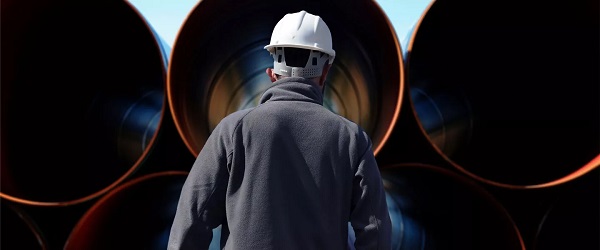
 Alberta2 days ago
Alberta2 days agoFederal policies continue to block oil pipelines
-
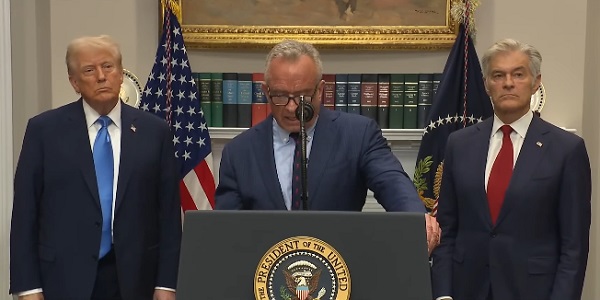
 Autism2 days ago
Autism2 days agoAutism – what we know
-

 espionage1 day ago
espionage1 day agoCanada Under Siege: Sparking a National Dialogue on Security and Corruption
-

 Business8 hours ago
Business8 hours agoWEF has a plan to overhaul the global financial system by monetizing nature
-
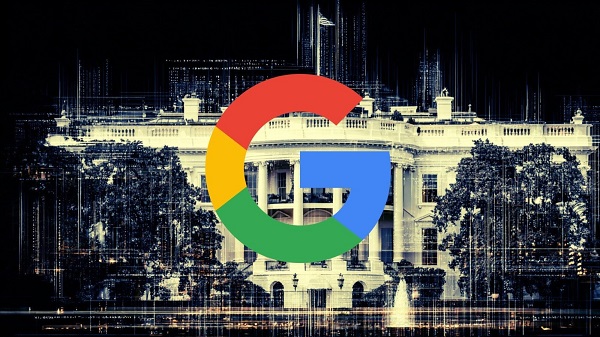
 Business1 day ago
Business1 day agoGoogle Admits Biden White House Pressured Content Removal, Promises to Restore Banned YouTube Accounts
-
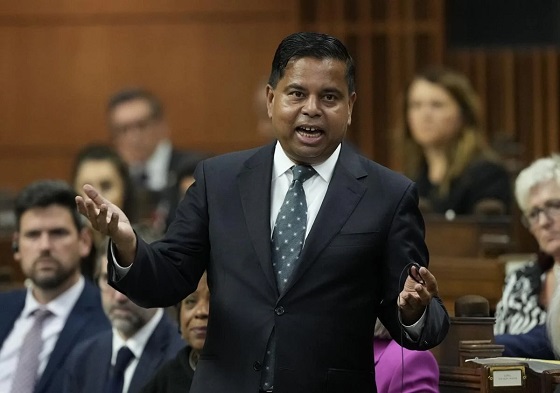
 Business10 hours ago
Business10 hours agoThe Leaked Conversation at the heart of the federal Gun Buyback Boondoggle
-

 Opinion9 hours ago
Opinion9 hours agoThe City of Red Deer’s financial mess – KPMG report outlines failure of council to control spending






